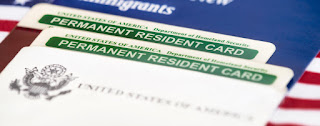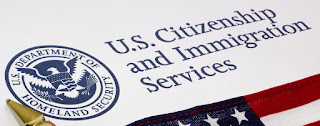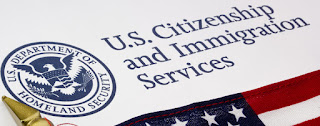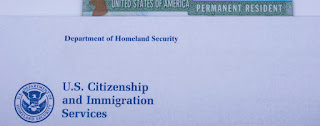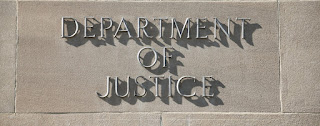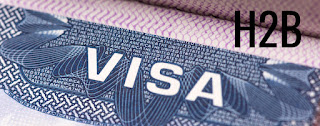Introduction
On May 7, 2018, the U.S. Department of State (DOS) released the Immigrant Visa Bulletin for June 2018 [
PDF version]. The Visa Bulletin for June 2018 contains application final action dates and dates for filing for family-sponsored and employment-based immigrant visa preference categories during the month. On May 10, 2018, the United States Citizenship and Immigration Services (USCIS) determined that adjustment of status applicants based on approved family-sponsored petitions must use the dates for filing in June 2018 whereas similarly-situated employment-based applicants must use the final action dates [
PDF version]. In this article, we will examine the pertinent charts from the June 2018 Visa Bulletin, discuss what they mean for those seeking adjustment of status during the month, and examine other news and notes included in the Bulletin.
For a full understanding of how to use the June 2018 Visa Bulletin, please consult the following articles on site for more information. First, please see our comprehensive post about using the immigrant visa bulletin as an adjustment of status applicant, and how this differs from its utility for those seeking immigrant visas abroad through consular processing [
see article]. We discuss in a separate post the difference between the filing dates and the final action dates [
see article]. For those interested in studying the progression of visa bulletin dates, please see our index article with links to our posts on visa bulletins from the current and previous fiscal years [
see index]. For quick reference, you may see our post on the May 2018 Visa Bulletin [
see blog].
Family-Sponsored Cases in the June 2018 Visa Bulletin
The USCIS determined on its website that those seeking adjustment of status based on an approved family-sponsored immigrant visa preference petition must use the dates for filing from the June 2018 Visa Bulletin. The dates for filing are more favorable than the final action dates for applicants.
In order for the beneficiary of an approved family-sponsored petition to be eligible to file for adjustment of status in June 2018, his or her priority date must be earlier than the applicable filing date cutoff for his or her applicable family-sponsored preference category and chargeability area. In addition, the individual must be otherwise eligible to file for adjustment of status under section 245 of the Immigration and Nationality Act (INA). The filing date in family-sponsored cases is generally the date on which the immigrant visa petition was properly filed with the USCIS.
The following chart contains the filing dates for family-sponsored cases, courtesy of the USCIS [
see here].
For reference purposes, we will include below the final action dates for family-sponsored preference categories for June 2018. Although family-sponsored applicants should use the filing dates in June, it is possible, if not likely, that the USCIS may determine that family-sponsored applicants must use the final action dates in July, August, and/or September. The final action dates may also serve as a guide for when family-sponsored applicants seeking immigrant visas abroad may have an interview scheduled with at a consular post.
The following chart contains the final action dates for family-sponsored cases, courtesy of DOS [
see here].
Employment-Based Cases in the June 2018 Visa Bulletin
The USCIS determined that those seeking adjustment of status based on approved employment-based immigrant visa petitions must use the final action dates from the June 2018 Visa Bulletin.
In order for the beneficiary of an approved employment-based immigrant visa petition to be eligible to file for adjustment of status in June 2018, his or her priority date must be earlier than the final action cutoff date for his or her applicable employment-based category and chargeability area. In addition, the individual must be otherwise eligible to file for adjustment of status under section 245 of the Immigration and Nationality Act (INA). In employment-based cases where labor certification was required, the priority date will generally be the date on which the labor certification application was approved by the U.S. Department of Labor. In employment-based cases where labor certification was not required, the priority date will generally be the date on which the immigrant visa petition was properly filed with the USCIS.
The following chart contains the final action dates for employment-based cases, courtesy of the USCIS [
see here].
Please note that a final action date of “C” means that the date is “current” for June 2018. The beneficiary of an approved employment-based petition who is otherwise eligible for adjustment of status may file for adjustment in 2018 if the final action date for his or her employment-based preference category and chargeability area is current, regardless of his or her priority date.
News and Notes from the Visa Bulletin for June 2018
The DOS explained that there is high demand for Mexico E4 and SR visas, and that it expects the Mexico E4 per-country limit to be reached during June. Accordingly, the DOS anticipates the retrogression of the July E4 and SR final action dates for Mexico. This will be necessary in order to ensure that the allocation of Mexico E4 and SR visas remains within the annual limit for fiscal year 2018.
As it has in every fiscal year 2018 visa bulletin, the DOS noted that it expects to reach its fiscal year 2018 annual limit of 50 Special Immigrant Visas in the SI category “early this year.” Thus, it is maintaining a June final action date of April 22, 2012 for this category. The final action date for the SI category will become “unavailable” once the annual limit of 50 SI visas is reached. This does not affect the SQ Special Immigrant Visa category for certain Iraqi and Afghan nationals employed by or on behalf of the U.S. government or Iraq and Afghanistan, which remains current in June 2018.
Conclusion
It is important for those seeking adjustment of status on the basis of an approved family-sponsored or employment-based preference petition to stay abreast of the latest developments in the visa bulletins in order to ensure that they will be ready to apply for adjustment of status at the earliest opportunity. In general, those seeking adjustment of status or seeking an immigrant visa abroad should consult with an experienced immigration attorney throughout the entire process.
Please visit the
nyc immigration lawyers website for further information. The Law Offices of Grinberg & Segal, PLLC focuses vast segment of its practice on immigration law. This steadfast dedication has resulted in thousands of immigrants throughout the United States.



